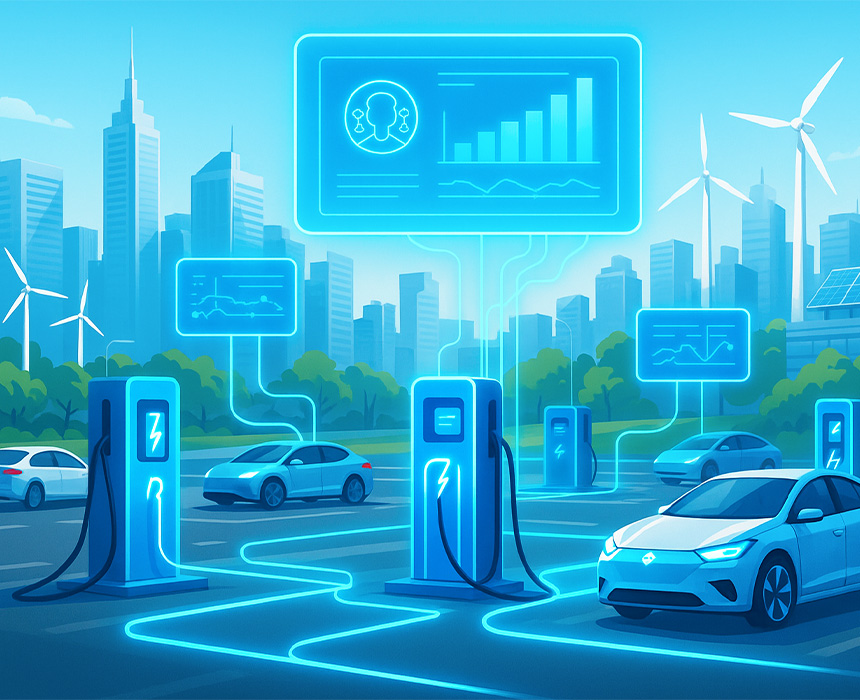The Future of Charging Network Management: Smart Systems, Integration and Efficiency
The rapid rise of electric vehicles (EVs) is not merely a change in individual mobility choices; it is a transformation reshaping energy infrastructures, urban planning, economic structures, and even social habits. At the very heart of this transformation lies the concept of charging network management. A few years ago, discussions centered on the functionality of single stations, while today the focus has shifted to how entire networks of hundreds or even thousands of stations can be managed in a reliable, efficient, and sustainable way.
The Importance of Charging Network Management
The charging network forms the backbone of EV adoption. While a single station serves only a local demand, a network ensures continuity of mobility at national or even international scale. The quality of management directly influences both user experience and the stability of energy systems.
If networks are poorly managed, long queues at stations may emerge, imbalances in energy supply can occur, and user satisfaction will be severely impacted. On the other hand, with the right management systems, networks evolve into more than just infrastructure—they become hubs of data production and analysis, contributing value far beyond their physical footprint.
Data-Driven Decision Making and Support Systems
In modern charging network management, data analytics plays a decisive role. Data collected from stations—usage statistics, peak hour traffic, consumption patterns, and user behaviors—are processed by management systems to support smarter decisions.
For instance, if certain city districts show predictable peaks at specific times, investments in additional stations can be directed there. Likewise, shifting grid loads across different regions minimizes imbalances and prevents inefficiencies. This approach not only reduces operational costs but also supports environmental goals by promoting efficient energy use.
Dynamic Routing and Enhanced User Experience
It is a mistake to think of charging network management as a purely technical task. In practice, it is the core determinant of user experience. With the help of digital platforms, users can see real-time occupancy of stations, make reservations, and access transparent, dynamic pricing.
Consider the case where the system guides a user away from a crowded station toward a less congested one based on real-time data. Such routing not only saves time but also transforms charging into an optimized and seamless service experience, increasing trust and loyalty.
Integration: V2G, Renewable Energy, and Smart Grids
In the future, charging networks will no longer only consume energy; they will actively contribute to the energy ecosystem. Through V2G (Vehicle-to-Grid) technology, EV batteries can supply energy back to the grid. This is especially critical in the integration of renewable energy sources.
Solar and wind energy often produce surplus electricity at certain times. EV batteries connected to charging networks can store this excess and release it during peak demand. Thus, networks evolve into active systems of storage and balancing, serving not just vehicles but entire cities.
Security and Regulatory Dimensions
With expansion comes heightened risks. Cybersecurity has become a critical factor in large-scale charging networks. Protection of user data, security of payment systems, and safeguarding against malicious attacks are all vital.
On the regulatory front, standards differ across regions. Türkiye relies on EPDK and TSE, the United States on DOE, FERC, NIST, SAE, Central Asia on O’zbekenergo and O’zDSt, while Russia applies frameworks under Минэнерго and ГОСТ. Compliance is essential not only for safety but also for global competitiveness.
Economic and Social Impacts
Charging network management is not only a technical challenge—it has direct economic and social implications. Efficiently managed networks build trust in EVs, accelerating adoption. This in turn reduces fossil fuel consumption and lowers environmental impact.
Additionally, the growth of networks creates new industries and jobs: software development, data analysis, maintenance services, and customer support solutions. These foster new employment opportunities and contribute to long-term economic development.
Looking Ahead
The future of charging networks lies in their integration with smart cities. Stations will become more than power outlets—they will serve as hubs for data, storage, and digital services. Artificial intelligence, big data, blockchain, and cloud solutions will further strengthen their capabilities, making networks more transparent, reliable, and sustainable.
Conclusion
Charging network management forms the backbone of the EV ecosystem. Effective management not only guarantees smooth charging processes but also transforms energy systems, urban life, economies, and social behaviors. This 6000+ character evaluation shows that charging network management sits at the very center of the mobility vision of the future and plays a key role in the creation of smart cities.




